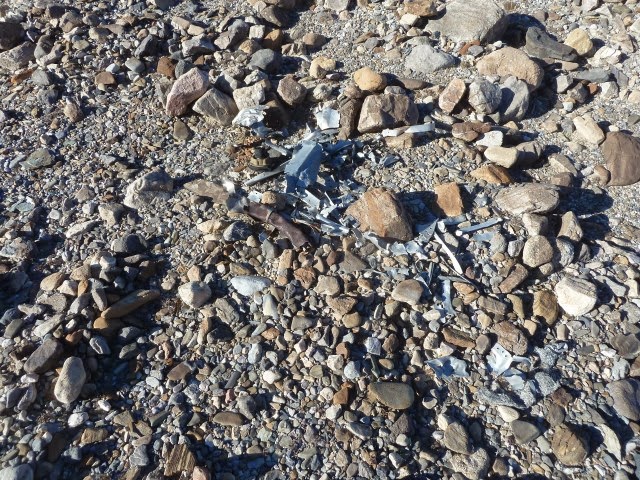 |
| Owens Lake as viewed from Hwy 190 |
Owen's valley drains the runoff from the Eastern slope of the Sierra Nevada and the Inyo and White mountains and several other mountain ranges to the east of the valley. These waters are drained from the valley by the Owens River which at one time formed Owens Lake pictured above.
It is hard to tell from the picture, but Owens Lake is mostly empty of water. Water coming down the Owens River from the north is collected in a reservoir a little ways north of the former Lake Owens and from thence diverted into a pipeline through which it is pumped some 200 miles to Los Angeles.
You can see the valley downstream from the lake below.
If you click on the picture, you can read the green roadsign at the left. Los Angeles 187 miles to the south, Bishop 80 miles to the north. At this point, there is no more Owens river. The Owens river has been diverted into the Los Angeles aqueduct. Evident in the photo above are cottonwoods, a sign that there is still some water available to sustain these water loving trees in an otherwise desert landscape.
So here we were driving south on 395 going parallel to the river bed of the former river and I mused out loud that maybe it's OK for LA to suck all the water out of the Owens River since does it really matter whether the river is sucked dry by farmers and ranchers living in Owens Valley or by the LA water utility? Either way, the local ecology is unbalanced for the benefit of people and at a cost to everyone else both plant and animal who lived off the water of the Owens River before European immigrants diverted it for human consumption.
My wife came down on the side of local consumption of water and I probably have to agree with her. But still, the reality is that LA by applying money and the laws of private property was able to get possession of this natural resource and export it for the greater benefit of the LA real estate industry. But things may change in the future.










